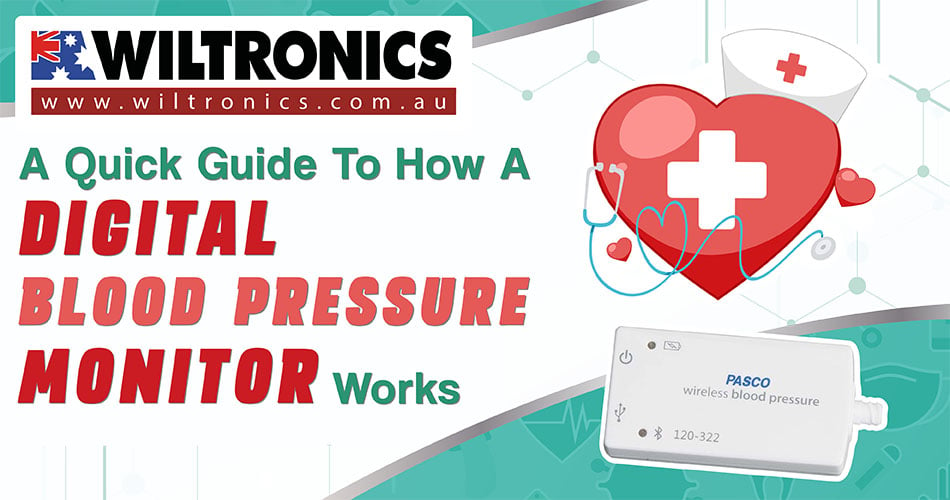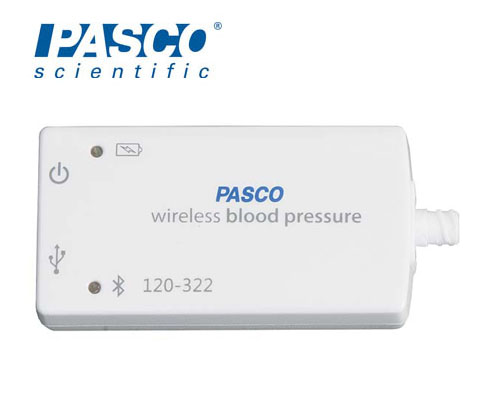A Quick Guide to How a Digital Blood Pressure Monitor Works
November 10, 2022

Its mode of operation makes a digital blood pressure monitor stand out more than the manual version.
Blood pressure changes throughout the day, so it is a good idea to check it at least twice. In most cases, you do not have to go to the clinic to do so, and home monitoring pays off.
And a digital blood pressure monitor lets you do that with convenience! Ideal for the elderly and kids alike, it is a worthwhile investment for in-home use.
Read on to learn more about this health device and see if it suits your needs.
Digital Blood Pressure Monitor
Blood pressure devices are common, and chances are good that you have seen or used one before. But can you remember if it is a manual or digital type?
A digital blood pressure monitor has a built-in LCD screen that displays the readings and an arm cuff. The self-inflating cuff gets inflated automatically once you turn on the device.
It is a fully or semi-automated machine that is easy to use, reliable and portable. Modern units also have special features to provide you with finger or wrist readings.
Some of them even offer paper printouts that will effectively help you keep records.
How Does it Work?
It is not difficult to measure a person’s blood pressure. This is especially true when using an electronic pressure monitor based on oscillometry.
This technique depends on the transmission of intra-arterial pulsations through the occluded arm. The cuff around the upper arm will inflate to a pressure of 30 mmHg. It impedes the blood flow in the brachial artery.
The cuff will deflate while detecting the oscillometric signal step by step. The oscillations on the arterial pressure are processed.
It will then establish an oscillometric envelope or curve, in turn. The signal sampling is adjusted to a value determined by the value of the heart pulse.
Manual vs Digital
There are two different blood pressure monitors available: manual vs digital.
A manual blood pressure monitor is a common medical equipment used by doctors. It is also called a manual sphygmomanometer.
It consists of a standard arm cuff, a reading scale, a rubber squeeze bulb, and a stethoscope. The gauge is where you look at a pointer on the dial.
The cuff goes around your upper arm, and you squeeze a rubber bulb to inflate it by hand. It works by tightening a cuff around the forearm and slowly increasing the pressure.
The systolic pressure is exerted against the artery walls when the heart beats.
Digital blood pressure monitors tend to be more user-friendly than manual devices. One includes a gauge, stethoscope, and error indicator in one instrument.
Unlike on a manual unit, the small screen shows the blood pressure readings. This makes it ideal and easy to use at home without any professional assistance.
Note: A quick introduction to wireless blood pressure sensors also await you below!
How Do I Measure My Blood Pressure?
Before you check your blood pressure, you should take note of the following:
- Wait 30 minutes after consuming caffeine, alcohol, or tobacco products.
- Go to the bathroom and empty your bladder.
- Sit in a comfortable position with your back supported.
- Rest for 3 to 5 minutes and avoid talking.
- Elevate your left arm to your heart level. Place it on a table or desk and sit still.
- Wrap the cuff around the upper part of your bare arm, and it should be smooth and snug. Your fingertip should have enough room for it to slip under the cuff.
- Make sure the placement of the cuff is an inch above the crease of your elbow.
Using a digital blood pressure monitor:
- Turn on the device.
- For automatic models, the cuff will inflate by itself with a push of a button. As for the manual ones, you have to do it yourself by squeezing the rubber bulb.
- The automatic device will slowly let air out once the cuff inflates.
- The display screen will show your systolic and diastolic pressures. Write them down in your record. The systolic pressure goes in front of the diastolic, e.g. 120/80.
- Press the exhaust button to release the air from the cuff.
- If you need to repeat the measurement, wait for 2 to 3 minutes before starting.
The importance of at-home blood pressure monitoring
One, it is a vital part of controlling blood pressure, also known as hypertension. Second, this ensures appropriate blood transit from the heart to the organs.
Both high and low blood pressure can have serious health consequences. This is especially true when left untreated or mismanaged.
Moreover, your blood pressure can change based on a variety of factors. This includes physical exertion, temperature, and even doctor’s visits.
Introducing the Wireless Blood Pressure Sensor
The birth of digital blood pressure monitors has paved the way for the latest models we have today. So, if you find the manual technique a bit complicated, you have other options.
Besides digital, the newest crop of monitors are wireless. They are digital, of course, and easier than ever to use.
Every time your heart beats, it pumps blood throughout your circulatory system. That puts pressure on the walls of your blood vessels.
In short, say goodbye to hand pumps and pressure gauges.
Digital wireless blood pressure monitors will display your results on the main unit. You may use an accompanying smartphone app to view graphs and sync data with apps like Apple Health.
The measurement is written as two numbers. The top is your systolic blood pressure, a.k.a. the pressure when your heart beats.
The bottom is your diastolic blood pressure – the pressure between beats. Healthy blood pressure ranges from 90/60 to 120/80 mmHg (millimetres of mercury).
If you are a medical student (or know someone who is), check out this PASCO unit below!

Wireless Blood Pressure Sensor with Standard Cuff – PASCO PS-3215
Product code: DLPS-3218
Intended for educational use only and not for medical purposes. Easy to use, you can check your blood pressure and heart rate with convenience.
It features a display that shows the blood pressure results in real time. The graph will help you understand the physiology of blood pressure better.
The unit comes with a standard arm cuff.
Digital Blood Pressure Monitor: The Bottom Line
With increasing health hazards, physicians encourage people to check their body parameters. Besides heart rate, blood pressure is no exception.
Blood pressure checks are an important aspect of routine healthcare practices. This dire need for in-home patient care monitoring led to the discovery of digital meters.
And if you have the means, why not consider investing in a wireless blood pressure sensor?
© Electrotech Brands Pty Ltd 2022


Write a Comment
You must be logged in to post a comment.